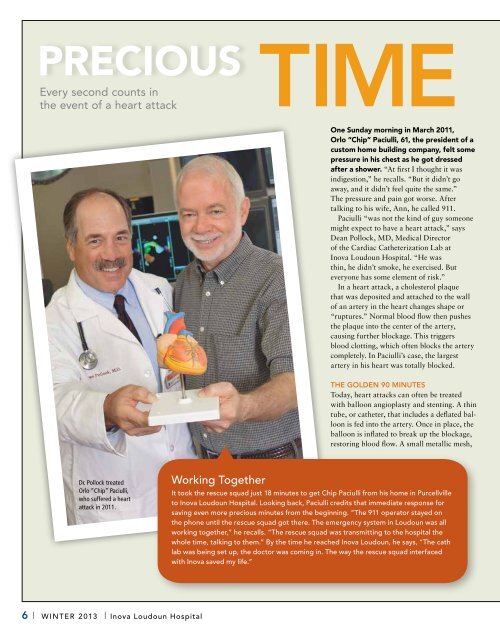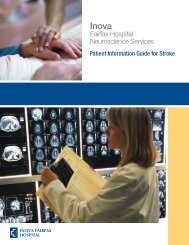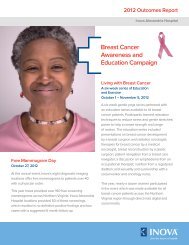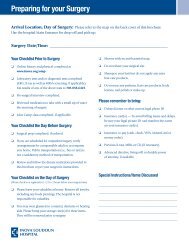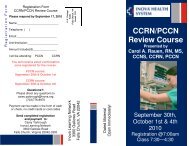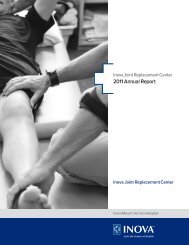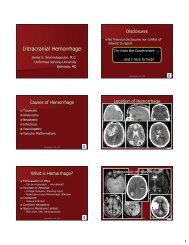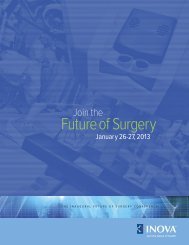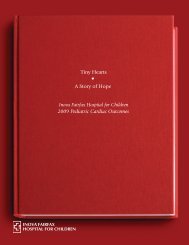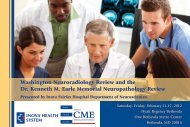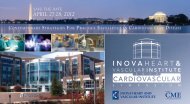You also want an ePaper? Increase the reach of your titles
YUMPU automatically turns print PDFs into web optimized ePapers that Google loves.
precious<br />
TIME<br />
Every second counts in<br />
the event of a heart attack<br />
One Sunday morning in March 2011,<br />
Orlo “Chip” Paciulli, 61, the president of a<br />
custom home building company, felt some<br />
pressure in his chest as he got dressed<br />
after a shower. “At first I thought it was<br />
indigestion,” he recalls. “But it didn’t go<br />
away, and it didn’t feel quite the same.”<br />
The pressure and pain got worse. After<br />
talking to his wife, Ann, he called 911.<br />
Paciulli “was not the kind of guy someone<br />
might expect to have a heart attack,” says<br />
Dean Pollock, MD, Medical Director<br />
of the Cardiac Catheterization Lab at<br />
<strong>Inova</strong> Loudoun Hospital. “He was<br />
thin, he didn’t smoke, he exercised. But<br />
everyone has some element of risk.”<br />
In a heart attack, a cholesterol plaque<br />
that was deposited and attached to the wall<br />
of an artery in the heart changes shape or<br />
“ruptures.” Normal blood flow then pushes<br />
the plaque into the center of the artery,<br />
causing further blockage. This triggers<br />
blood clotting, which often blocks the artery<br />
completely. In Paciulli’s case, the largest<br />
artery in his heart was totally blocked.<br />
the Golden 90 Minutes<br />
Today, heart attacks can often be treated<br />
with balloon angioplasty and stenting. A thin<br />
tube, or catheter, that includes a deflated balloon<br />
is fed into the artery. Once in place, the<br />
balloon is inflated to break up the blockage,<br />
restoring blood flow. A small metallic mesh,<br />
Dr. Pollock treated<br />
Orlo “Chip” Paciulli,<br />
who suffered a heart<br />
attack in 2011.<br />
Working Together<br />
It took the rescue squad just 18 minutes to get Chip Paciulli from his home in Purcellville<br />
to <strong>Inova</strong> Loudoun Hospital. Looking back, Paciulli credits that immediate response for<br />
saving even more precious minutes from the beginning. “The 911 operator stayed on<br />
the phone until the rescue squad got there. The emergency system in Loudoun was all<br />
working together,” he recalls. “The rescue squad was transmitting to the hospital the<br />
whole time, talking to them.” By the time he reached <strong>Inova</strong> Loudoun, he says, “The cath<br />
lab was being set up, the doctor was coming in. The way the rescue squad interfaced<br />
with <strong>Inova</strong> saved my life.”<br />
6 | WINTER 2013 | <strong>Inova</strong> Loudoun Hospital


